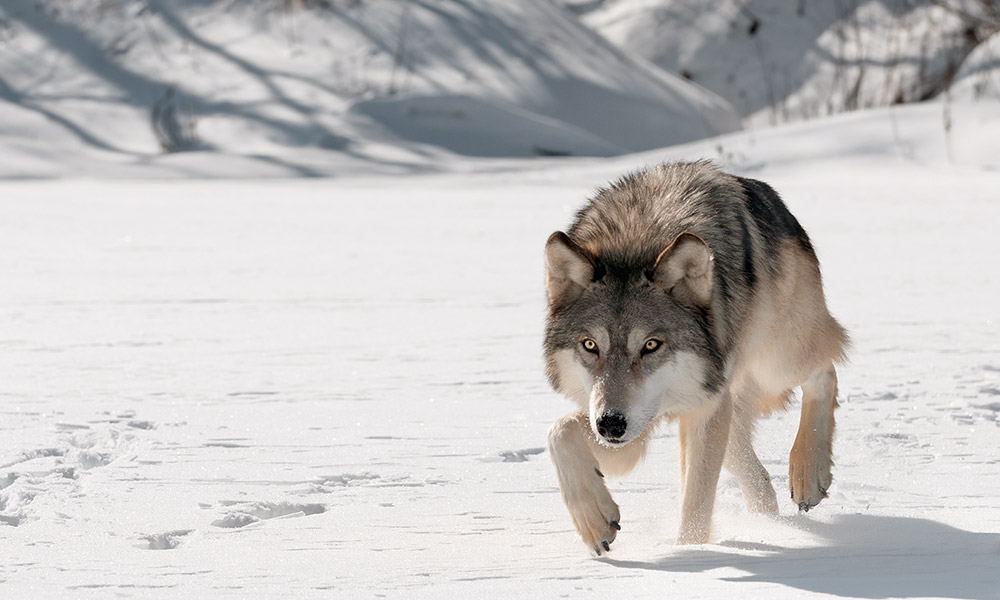
UBCO researchers have determined wolves living in high densities of human-created linear features need far less space to survive than wolves in the wilderness.
Wolves are intelligent predators. Like people, they use trails, seismic lines and roads to efficiently move through landscapes.
But new research from UBC Okanagan’s Irving K. Barber Faculty of Science has found that wolves living in areas with high densities of human-created linear features need far less space to survive than in less disturbed areas.
One of the most predominant forms of habitat alteration, particularly in Western Canada, are linear features such as roads, seismic lines or pipelines, explains Melanie Dickie, a doctoral student who works with UBCO biologist Dr. Adam T. Ford
“Smaller home ranges mean that, all else being equal, more wolves can fit into a given space. Our study is important for understanding how food and movement combine to influence home range size. Wolves can have profound impacts on their prey, and even plant communities. If humans are driving changes to those links in the food web, we need to understand how and then find a way to manage our part of the equation.”
Dickie’s team used data from 142 wolves outfitted with GPS devices to analyze the impacts of ecosystem productivity—a metric of food availability for ungulates and their predators. They also examined linear features as a measure of how easy it is for wolves to access food in their home ranges. The ranges covered more than 500,000 square kilometres of boreal forest spanning three Western Canadian provinces.
Linear features enable the movement of predators like wolves and this increases their encounter rates with prey and, consequently, their kill rates, says Dr. Ford. Increased wolf kill rates have important consequences for woodland caribou, which are in decline across much of their range as a result of increased predation.
“Millions of dollars are being spent on seismic line restoration in Canada’s forests with the hope of slowing down wolves and reducing predation on caribou,” he says. “This study is a valuable tool in helping to identify where the most effective areas for restoration will be.”
By restoring linear features, Dickie says areas of low ecosystem productivity may see a decrease in regional wolf abundance as a result of making it more difficult for them to hunt.
In contrast, in high-productivity areas, restoration may reduce wolves’ hunting efficiency, but likely will not affect regional density.
“This research is a great example of how ecological theory can support wildlife management,” says Dr. Rob Serrouya, study co-author and Director of the Caribou Monitoring Unit at Alberta’s Biodiversity Monitoring Institute. “Pushing our understanding of how movement and habitat use influences the distribution and abundance of species, will directly link to how we manage those species.”
Dr. Ford says it’s important for researchers to continue monitoring human activity when looking at species’ survival rates in Canada.
“In the 1960s, ecologists determined that rapid growth at the bottom of the food web—plants—was affecting the rest of the food chain,” he says “This study adds human activity to the equation with the goal to help save caribou within a rapidly-changing environment.”
This study was recently published in the journal Ecology and received funding from the Regional Industry Caribou Collaboration.